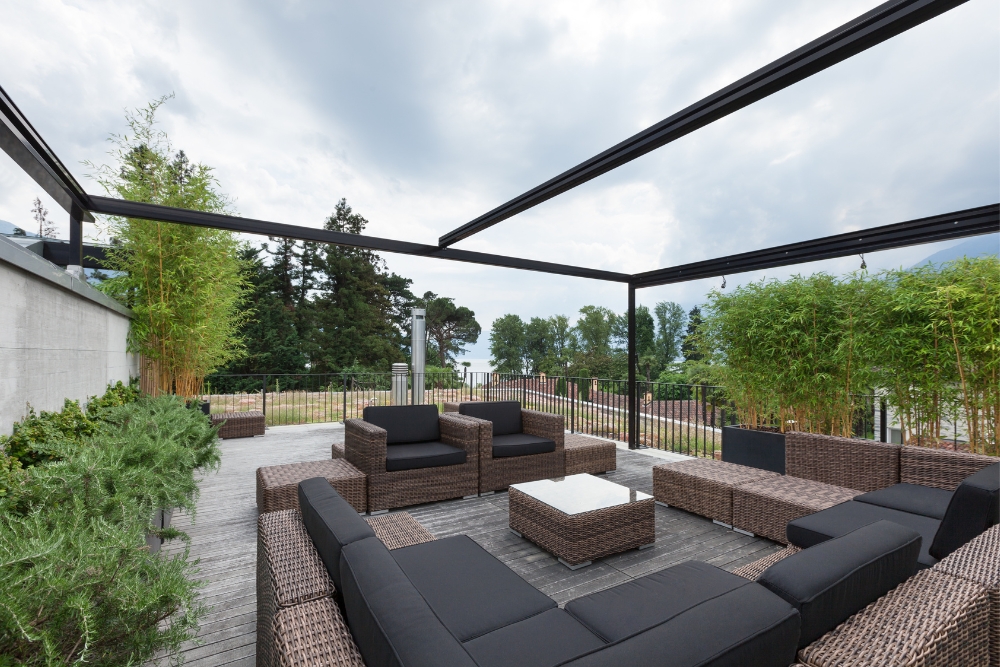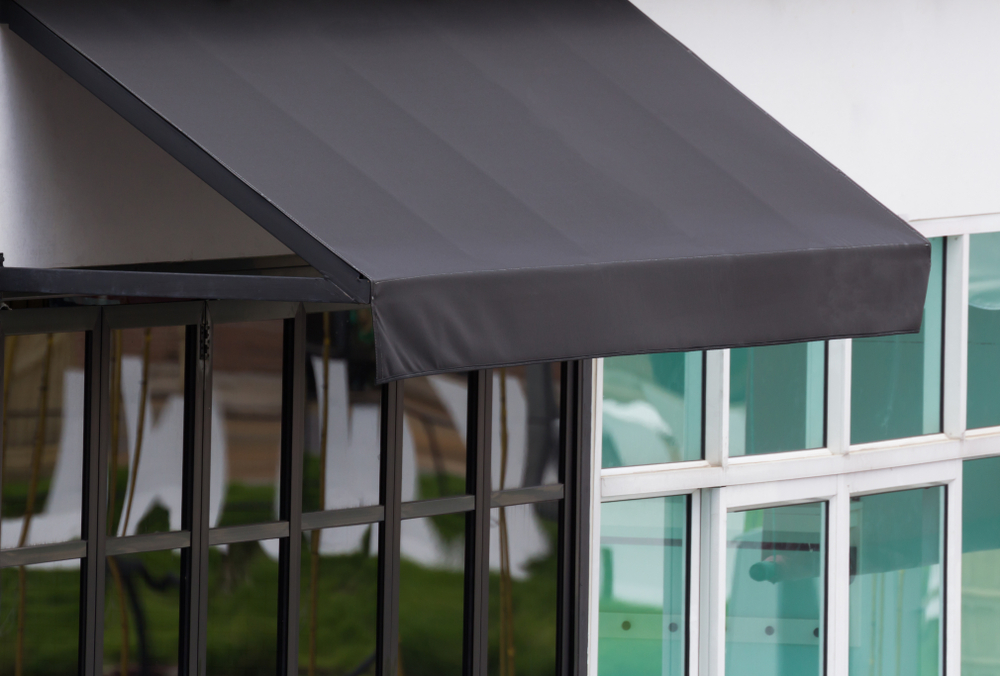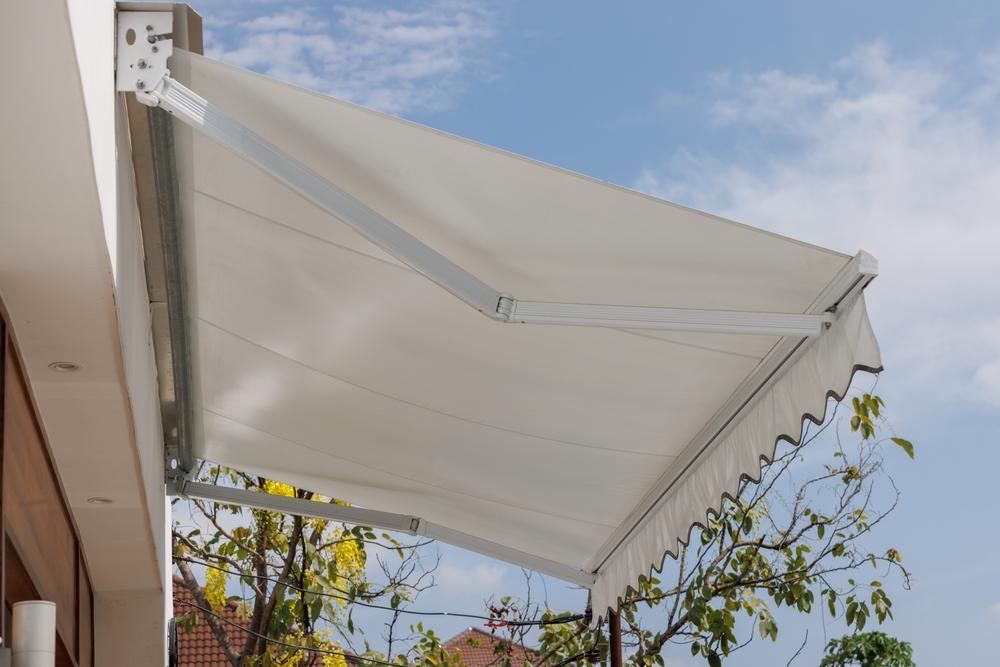G’day mate! Ever stared at your awning, scratching your head, unsure whether it’s time for a repair or a total replacement? We get you – we’ve walked in those shoes too. Turns out that not every saggy fabric or odd discolouration spells doom and gloom for our treasured awnings.
In this yarn, we’ll clue you in on the signs that tell you when something’s up with your retractable awning fabric. Plus, we’ll share some fair dinkum tips on preventive upkeep and necessary fixes.
So who’s keen to add more years to their trusty awnings’ life?
Key Takeaways
- Signs that your retractable awning fabric needs repair include sagging, rips, tears, holes, stains, discolouration, and mould and mildew growth.
- Environmental factors like sun exposure and weather damage can contribute to awning fabric damage over time.
- When repairing your retractable awning fabric, choose durable and weather-resistant materials suitable for your specific climate.
- Factors to consider when deciding whether to repair or replace your awnings include cost comparison, the extent of damage, and potential future repairs.
Signs Your Retractable Awning Fabric Needs Repair
If you notice sagging, rips, tears, holes, stains, discolouration, or mould and mildew growth on your retractable awning fabric, it’s a clear sign that it needs repair.
Sagging
Sagging is a common problem that affects the performance and aesthetic of your awning. This issue often arises due to constant exposure to harsh weather conditions, heavy objects hanging, or natural wear and tear over time.
A sagging awning can collect water during rainfall, leading to further damage or even posing safety risks around your home. Fortunately, quick intervention can prevent these potential issues from escalating.
Regular inspections help identify any signs of sagging early on so you can act promptly. You might need to tighten some bolts or replace certain parts depending on the extent of the sagging.

Rips, Tears, or Holes in Fabric
If you notice rips, tears, or holes in the fabric of your awning, it’s a clear sign that it needs attention. These damages can occur due to various reasons such as environmental factors like sun exposure and weather damage, or simply from age and wear and tear.
The good news is that repairing these issues is possible in many cases. Depending on the extent of the damage, you may be able to patch up small tears or holes yourself using a repair kit specifically designed for awning fabrics.
However, for larger damages or if you’re unsure about your DIY skills, it’s best to consult a professional who can assess the situation and provide proper repairs or guidance on whether replacement is necessary.
Stains and Discolouration
Stains and discolouration on your awning fabric can be unsightly and detract from the overall appearance of your outdoor space. They can also indicate damage or wear that may require attention.
It’s important to address stains and discolouration as soon as possible, as they could worsen over time if left untreated. Regular cleaning and maintenance can help prevent stains from setting in, but if they do occur, there are options for removing them or repairing the affected areas.
Remember to choose a repair method or product that is suitable for the type of fabric you have, taking into consideration any special cleaning instructions provided by the manufacturer.
Mold and Mildew Growth
Mould and mildew growth on your awning fabric can be a sign of moisture accumulation and poor ventilation. It’s important to address this issue promptly, as mould and mildew can not only cause a foul odour but also lead to health problems.
Regular cleaning and proper maintenance can help prevent the growth of mould and mildew on your awning fabric. If you notice any signs of mould or mildew, it’s recommended to seek professional cleaning services or use appropriate cleaning solutions approved for use on awnings.
Remember, taking proactive steps to prevent mould and mildew growth will help prolong the lifespan of your awning fabric and keep it looking fresh.
Understanding the Causes of Retractable Awning Fabric Damage
Retractable awning fabric damage can be caused by environmental factors like sun exposure and weather, as well as age and wear and tear. Discover the reasons behind your awning’s wear and tear, read more here.
Environmental factors (sun exposure, weather damage)
Environmental factors, such as sun exposure and weather damage, can take a toll on the fabric of your retractable awnings. The intense rays of the sun can cause fading and discolouration over time, while harsh weather conditions like wind, rain, and hail can lead to tears or holes in the fabric.
It’s important to be proactive in protecting your awnings from these elements by choosing durable and weather-resistant materials for repair or replacement. Regular cleaning and maintenance, along with scheduled inspections to catch issues early, are also key in ensuring that your awnings withstand environmental factors and stay in good condition for years to come.
Age and wear and tear
Over time, awnings can be affected by age and wear and tear. As the fabric is exposed to the elements, it may begin to show signs of damage such as fading, fraying, or weakening. The metal components of the awning may also start to rust or corrode.
These issues can impact both the functionality and appearance of your awning. While regular cleaning and maintenance can help prolong its lifespan, eventually there comes a point where repairs may no longer be sufficient.
Understanding the impact of age and wear and tear on your awning can help you make an informed decision about when it’s time to consider replacement options.

Choosing the Right Material for Retractable Awning Fabric Repair
When it comes to repairing your retractable awning fabric, selecting durable and weather-resistant materials can make all the difference in ensuring long-lasting results. Discover the best options for different climates and find out which material suits your needs.
Read more to make informed decisions about your awning repairs.
Durable and weather-resistant materials
Choosing the right material for your retractable awning fabric repair is essential to ensure durability and weather resistance. Look for fabrics that are specifically designed to withstand the elements, such as UV-resistant and waterproof materials.
These types of fabrics will be more resistant to sun damage, fading, and mould or mildew growth. Additionally, consider materials that are known for their strength and longevity, such as acrylic or polyester blends.
By opting for durable and weather-resistant materials when repairing your awning fabric, you can extend its lifespan and enjoy long-lasting protection for your outdoor space.
Options for different climates
In choosing the right material for your retractable awning fabric repair, it’s essential to consider the climate where you live. Different climates require different options to ensure durability and longevity.
For hot and sunny climates, materials that offer excellent UV resistance are crucial to protect against fading and damage from sun exposure. Look for fabrics with high UPF ratings that can withstand intense sunlight without deteriorating quickly.
On the other hand, if you live in a region with heavy rainfall or high humidity levels, opt for materials that are resistant to mould and mildew growth. These fabrics should be easy to clean and quick-drying to prevent moisture buildup.
Additionally, make sure they have good water-repellency properties to keep your awning dry during wet weather.
For areas prone to strong winds or extreme weather conditions, choose fabrics that are built to withstand these challenges. Look for materials that are tear-resistant and have reinforced stitching for added strength. A sturdy fabric will prevent damage caused by wind stress or debris impact.
How to Determine Whether to Repair or Replace Your Awnings
When it comes to deciding if your awnings need repair or replacement, we’ve got the tips and tricks to help you make the right choice. Read on to find out more!
Cost Comparison
When deciding whether to repair or replace your awnings, cost comparison is an important factor to consider. The cost of repairing your awning will depend on the extent of the damage and the materials needed for the repair.
Minor repairs such as patching a small tear or cleaning out debris from the tracks can be done at a relatively low cost. However, if your awning has significant damage or requires major repairs, it may be more cost-effective to replace it altogether.
On the other hand, replacing your awning can also come with costs, including purchasing new fabric and installation fees. It’s worth considering both options and weighing them against each other before making a decision.
The extent of damage and potential for future repairs
Assessing the extent of damage to your awning and considering its potential for future repairs is crucial in determining whether to repair or replace it. Take a close look at the fabric for signs of sagging, rips, tears, holes, stains, and discolouration.
These issues can usually be repaired effectively. However, if the damage is extensive or indicates structural problems, such as warped tracks or significant fading on RV awnings, replacement may be necessary.
Keep in mind that regular cleaning and maintenance can help prevent further damage and extend the lifespan of your awning. By taking proactive measures now, you can potentially avoid costly repairs or replacements down the line.
Maintaining Your Retractable Awning Post-Repair
After repairing your retractable awning, it is crucial to maintain it properly to ensure its longevity and functionality. Regular cleaning, avoiding unnecessary strain on the awning, and scheduled inspections can help catch any issues early on. Keep reading for essential tips on maintaining your awning post-repair!
Regular cleaning and maintenance
Regular cleaning and maintenance are essential for keeping your retractable awnings in top condition. By regularly removing dirt, leaves, and debris from the fabric and tracks, you can prevent build-up that can lead to stains, mould growth, and potential damage.
A simple solution of mild soap and water is usually sufficient for cleaning the fabric. Gently scrubbing with a soft brush or sponge will help remove any stubborn stains. Don’t forget to also inspect the awning hardware for any loose screws or bolts that may need tightening.
By taking these proactive measures, you can ensure that your awnings stay clean, functional, and looking their best for years to come.
Avoiding unnecessary strain on the awning
To ensure the longevity and functionality of your awning, it’s important to avoid placing unnecessary strain on it. This can be done by avoiding hanging heavy objects or applying excessive pressure on the fabric.
Additionally, be mindful of strong winds and storms that could potentially damage your awning if left open. Regularly inspecting and maintaining your awning will also help prevent any potential issues from arising.
By following these simple tips, you can protect your investment and enjoy your awning for years to come.
Scheduled inspections to catch issues early
Regular inspections are essential for keeping your awnings in good condition. By scheduling inspections, you can catch any issues early before they become major problems. During these inspections, check for signs of damage such as sagging, rips, tears, or holes in the fabric.
Look out for stains, discolouration, and mould growth as well. By identifying these issues early on, you can take prompt action to repair or replace your awnings if necessary. Don’t underestimate the importance of regular inspections in maintaining the longevity and effectiveness of your awnings.
Know More about Your Awnings
Deciding whether to repair or replace your awnings can be a tough decision, but knowing the signs of damage and understanding the causes can help you make an informed choice. By choosing durable materials for repairs and maintaining your awnings regularly, you can extend their lifespan and keep them in great condition. Remember, taking proactive measures now can save you time and money in the long run.

